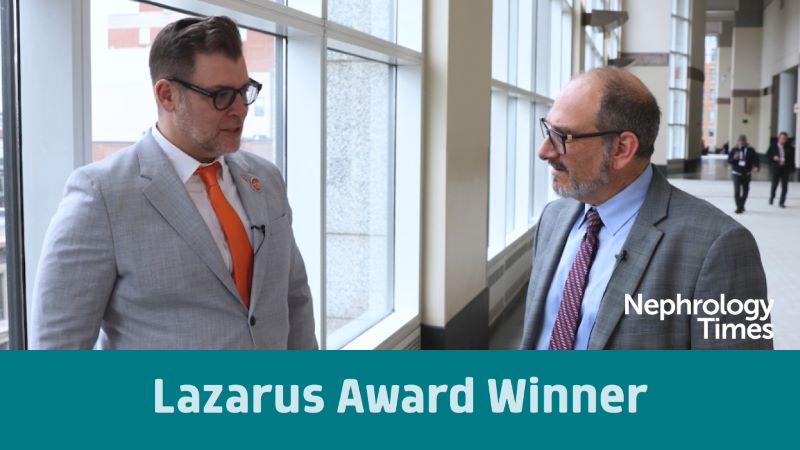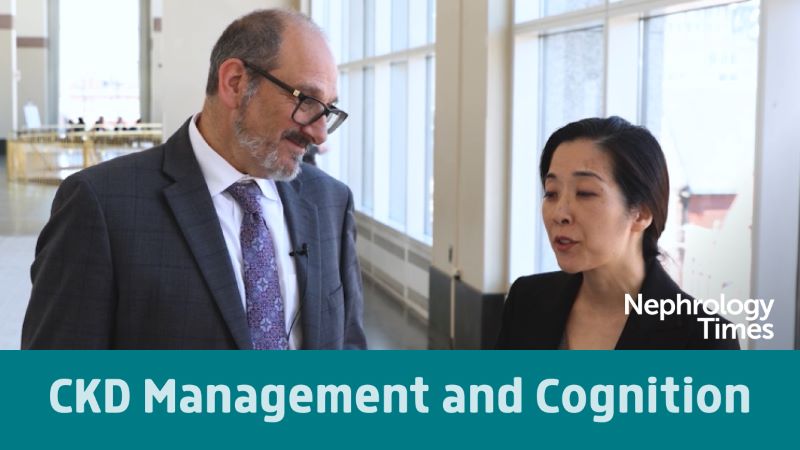Dr. Marianne Matthias Talks Shared Decision Making in Chronic Pain Care
By Rob Dillard - Last Updated: August 1, 2023Trust is essential for helping patients of all ages with chronic pain have productive conversations about pain management with their clinicians as well as supportive of better overall health outcomes, especially when it comes to opioids, according to Regenstrief Institute Research Scientist Marianne Matthias, PhD, in an article she recently co-authored in the Journal of General Internal Medicine. Dr. Matthias’ research focuses on health communication, especially in chronic pain care and in mental health.
DocWire News spoke to Dr. Matthias about the importance of two-way communication and trust in treating chronic pain.
DocWire News: Can you tell us about yourself, and your research focus?
Dr. Marianne Matthias: Yeah. I am a faculty member at the Indiana University School of Medicine in the division of general, internal medicine, and geriatrics. And I am a research scientist for VA Health Services Research and Development. And primarily, what I do is research and my focus is really on patient-centered approaches to healthcare, including patient provider communication. And a lot of my work is in the area of chronic pain. So the article that you’re interested in today is really based on a lot of work that I and others have done over the past 10-plus years.
Can you speak to us about the article?
My colleague, Steven Henry, who co-authored with me, and I have been doing this work, like I said, for 10-plus years, and just have learned a lot about how patients and primary care providers communicate about chronic pain. And this article is a viewpoint article. It’s just really our opinions backed up with research. And we really felt strongly that we wanted to convey the idea of the importance of the patient, provide a relationship in chronic pain care. And we did it within the context of shared decision making because shared decision making is being advocated more and more as a desired approach for a lot of patient care in a lot of areas, not just pain. And it’s appropriate, and it’s right because shared decision making takes into account, not just the provider’s perspective, but the patient’s perspective, including their lifestyle, what they value, what their preferences are. So that not one decision is right for every patient.
But what we wanted to emphasize was that shared decision making, it’s very easy to boil it down to a series of steps. And then it’s tempting to take a checklist approach or, “Okay, I did this, and then I did this, and then I ask about this.” And so, we’re not saying shared decision making is not important. On the contrary, it is important, but what we wanted to emphasize was that more important than going through all of the steps is to really take the time with patients to just let them know you’re there, and you care, and you believe them, and you trust them, and they trust you. And it’s based on research that Dr. Henry and I both have done, some together, some separately in the past, including finding things like when patients trust that their doctors really care about their own best interests, they’re more likely to agree to things that they might not, otherwise agree to, like decreasing or getting rid of opioids. And as I’m sure you know, there’s increasing recognition of the harms related to opioids.
And also, there’s a big study published a couple of years ago, one of the first big studies for opioids in chronic pain that really showed that opioids were no better than things like ibuprofen for chronic pain. So it’s not like we’re trying to take away really effective treatments. We’re trying to minimize dangerous treatments. And patients are more willing to go along with that and to trust their providers to not prescribe opioids, but find something else that’s going to help them. If they really feel like their doctor is looking out for them, and has their back, and understands them, and trusts them. So trust goes a long way. And is the foundation, really, that you have to have before you can truly engage in something like shared decision making.
What are the best ways to establish trust between primary care providers and patients?
I think that, number one, listening, really listening. I guess before I go on, I should say I fully recognize, and my co-author, Steven Henry, is a primary care physician himself. And we understand the time pressures and the so much is put on especially primary care providers. And by the way, most pain is managed in primary care. So it falls a lot on primary care providers, and they have a lot of other things that they have to deal with, high blood pressure, diabetes management, all sorts of other things. So I just want to throw out that caveat that we do understand that there’s a lot going on. But a lot of times, it doesn’t take much, just listening and asking patients what their opinions are, what their feelings are, making sure to just ask simple questions that explore a little bit about a patient’s daily life. If a provider wants to encourage a patient to try physical therapy, well, maybe the patient works five days a week during the day and can’t make appointments. So just understanding and getting to know that patient so that the provider can then customize recommendations based on that patient.
Also, what we found, in the past, and this is something always that anybody has control over, but having a longstanding relationship really helps. We talked to patients in some of our research who talked about, “Oh, my doctor, 10 years ago, helped me through an addiction, and was with me the whole time, and got me through it. So because of that, I trust her.” So past history builds trust too. It’s not something that can be done usually in one visit, but it does need to occur over time, which can be challenging for new patients. And in addition, I think that… Well, I’ll stop there. I’ll stop there because I lost that thought. But those are just some general ideas about ways that we’ve seen in our research that build trust.
You know what? I will give you one more example. We did a study a couple of years ago with patients who were being tapered off of opioids. So they were having their opioids reduced. And we talked to both patients and providers, and of the things we found that really helped build trust in that type of situation was if the patient had their opioid dose reduced and the provider was willing to go back up on the dose temporarily if the patient experienced excess pain. So they provider was willing to interact with the patient regularly, see how they were doing, and listen to them and their pain reports. And if they felt like they weren’t doing well on that lower dose, then they would go back up on that dose temporarily, but until they could figure out how else to bring them down from the dose. And that made patients feel like they were a part of that decision, even though, in this case, there was an institutional mandate to reduce opioids. So really, neither patient or provider had much of a choice in the matter.
But when providers gave patients choices like, well, if we need to go back up a little bit, we can, and also gave patients some control over how fast they got tapered, things like that made a big difference too. So there are certain situations where there are limits to what a patient can control, when there are things like regulatory things, especially surrounding opioids. But if providers were able to give patients at least some control in those situations, it made a big difference for the relationship and the amount of trust that patients felt like they had in those providers.
Any closing thoughts?
I would just say, again, that pain care is hard, and primary care providers especially don’t usually get very specific training in chronic pain care. So a lot of times they feel quite unsupported. And in many cases, because there’s so many options for pain care and usually you need to try different things, and usually it’s a combination of different treatments that end up helping rather than one specific thing, there’s not really a right or wrong treatment or approach or answer in many cases. But the one thing that I think can transcend all of that in terms of how to choose a treatment and how to approach chronic pain care is really that relationship with patients. And when patients feel cared for, when patients feel like their providers are really looking out for them, that’s therapeutic in and of itself, regardless of what other treatment is recommended or prescribed.







 © 2025 Mashup Media, LLC, a Formedics Property. All Rights Reserved.
© 2025 Mashup Media, LLC, a Formedics Property. All Rights Reserved.